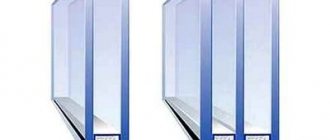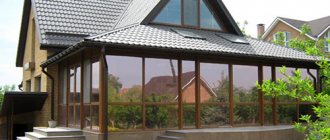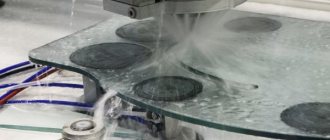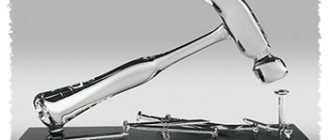01/31/2018 Excessive exposure to ultraviolet radiation on human skin is a generally recognized risk factor for the development of melanoma. I won't even provide links. This thesis is true for all UV sources: both natural (sun) and artificial (solarium).
Recently, in the comments to an article about UV protection, I was asked a question: can glass transmit ultraviolet light and does this situation increase the risk of developing melanoma? In this article I will examine this rather pressing issue in detail. We'll talk about glass in cars, glass used in building construction, as well as tinting film and sunglasses.
What does ultraviolet light consist of and what effects does it have on the body?
The natural sunlight that reaches us consists of UVA (96%) and UVB (4%) rays. [1] Both types have damaging effects on the skin .
Acute, immediate effects on the skin from UV radiation - redness, pigment spots. Chronic, delayed effects - decreased immunity, photoaging of the skin, increased risk of tumor development (melanoma, basal cell carcinoma, squamous cell carcinoma, actinic keratosis). [2]
Ultraviolet radiation also has undesirable effects on the eyes. Acute effect – keratoconjunctivitis. Chronic effects – climatic droplet keratopathy, formation of pterygium, pingucula or cataracts. I won’t give links or give scary pictures, just take my word for it – all these diseases are very unpleasant.
How skin tans
To give a full answer to the question about the possibility of getting a tan through a window, you need to understand what causes darkening of the skin.
Essentially, tanning is the body's response to exposure to ultraviolet radiation. In the basal layer of the epidermis there are melanocyte cells with a multifaceted body and characteristic processes. When the skin is exposed to direct sunlight, melanocytes synthesize the black-brown pigment melanin, which inhibits the penetration of damaging UV radiation.
Through their processes, they transmit melanin granules to other cells - keratinocytes, which originate in the deep layers of the skin and then gradually move to its outer surface. At the same time, they move melanin along with them. The epidermis contains a large amount of melanin, and the skin becomes darker. Over time, the stratum corneum peels off, and with it the melanin granules are eliminated. Accordingly, the skin turns pale again.
Through processes, melanocytes “inject” melanin granules into keratinocytes
Car glass allows sunlight to pass through
Many people these days spend quite a lot of time indoors or in the car. Exposure to sunlight through car glass is another potential source of UV that needs to be considered.
In one Australian study [3], the authors noted an increased incidence of actinic keratoses and lentigo maligna on the right side of the body (left-sided in Australia). Another study from the USA [4] (right-sided traffic) indicates a slight increase in the number of melanomas, basal cell carcinomas and squamous cell carcinomas on the left side of the body, compared to the right - 52 versus 47%. This is not to say that these data are frightening, but the issue clearly requires detailed study.
In the next part of the article we will look at the passage of UV rays through window glass, car glass, tint films and sunglasses.
What is a tan and why does it appear?
Tanning is the body's protective reaction to intense ultraviolet exposure. Under the influence of sunlight, melanin is actively synthesized in the body, which tries to protect cells from dying, coloring the body a chocolate shade.
Prolonged exposure to direct sunlight, instead of a beautiful tan, can lead to burns, age spots, freckles, moles and malignant neoplasms.
Only moderate sun exposure is beneficial to health. Mood and well-being improve, metabolic processes are activated, and the synthesis of important hormones and microelements necessary for normal human life is accelerated.
About the types and properties of UV rays
Ultraviolet rays come in several types with their own characteristics, namely:
- Type C. It is considered the most aggressive type of solar radiation, which can practically destroy all life on the planet. But ultraviolet C rays are successfully blocked by the atmosphere.
- Type B. Rays of this type are able to penetrate the body and accelerate the production of melanin. Ultraviolet B radiation can also cause sunburn, age spots and cancer.
- Type A. The safest type of ultraviolet radiation, does not cause any reactions on the skin and does not affect the functioning of organs. Under the influence of such solar radiation you will not be able to tan.
Types of automobile glass and their transmittance
The main types of glass found in Russia and their markings:
- Stalinit (English tempered, temper or (T), Russian - tempered, marked [З]): single-layer, used for the production of rear and door glasses, as well as hatches. If damaged, it breaks into small fragments without sharp edges. It protects 100% from UVB rays and 21% from UVA rays. [5]
- Triplex (English laminated, lamisafe, Russian - laminated, marked [WL]): consists of two or three layers of glass glued together using a polymer film - this increases the strength of the glass upon impact. Most often installed as a windshield. If damaged, it does not break into fragments, because they remain on the film. Blocks UVA rays by 98%, UVB rays by 100%. [5]
- Laminated glass - refers to laminated glass, but has more layers. Used in luxury cars or armored models. Block both types of rays 100%.
In the United States, a law was passed in September 2022 obliging manufacturers to install laminated glass in the rear and side doors of cars.
In my car, as it turned out, everything is exactly like that - the windshield is laminated, the sides are hardened.
Types of car glass by thickness and color
Glass of different thicknesses transmits ultraviolet radiation differently, but this difference is extremely insignificant compared to other factors. [6]
The color of the tint is more important than its thickness. According to research, [6] green-tinted glass does not transmit ultraviolet radiation. Blue-tinted glasses have the lowest blocking abilities - they block only 44% of UVA rays.
Types of glass used in buildings
All types of glass can be used in both buildings and cars.
Laminated or laminated glass protects most well (almost 100%). [6].
Alas, I was unable to find any markings on the double-glazed windows at home, however, as well as on the manufacturer’s website
Tinting films for cars
There are several studies examining the effects of tint films on various types of glass [5], [6]. All researchers agree that tempered glass, to which a tinting film is added - stalinite in domestic terminology - blocks almost 100% of both types of UV rays. Let me also remind you that laminated (usually windshield) glass does not need such films due to the initial high level of protection.
Reviewers and author
Reviewers:
Artyom Balabanov, electronics engineer, developer of UV curing systems;
Rumen Vasilev, Ph.D., lighting engineer, OOD "Interlux", Bulgaria; Vadim Grigorov, biophysicist; Stanislav Lermontov, lighting engineer, Complex Systems LLC; Alexey Pankrashkin, Ph.D., Associate Professor, semiconductor lighting engineering and photonics, INTECH Engineering LLC; Andrey Khramov, specialist in lighting design for medical institutions; Vitaly Tsvirko, head of the lighting engineering testing laboratory "CSOT NAS of Belarus" Author:
Anton Sharakshane, Ph.D., lighting engineer and biophysicist, First Moscow State Medical University named after. THEM. Sechenov
Links
Sunglasses and their ability to transmit ultraviolet light
I was able to find several standards that regulate the requirements for the ability of sunglasses to transmit ultraviolet light. The most severe of them are the Australian and New Zealand AS/NZS 1067:2003 and the European EN 1836:2005.
Compliance with the European standard is indicated on the glasses as CЄ (Conformite Europeenne) + a number from 0 to 4 (see below).
Australian New Zealand and European standards
According to the table, there are 5 types of lenses depending on light transmittance. 0 – almost no protection from the harmful effects of ultraviolet radiation, 4 – provides maximum protection.
There is an American standard ANSI Z80.3, which defines the maximum protection as 400UV or UV100%.
There are studies that highlight the basic requirements for sunglasses:
- Glasses should sit as close to the eyes as possible. An offset of even 6 mm significantly increases the amount of ultraviolet light reaching the eyes. [8]
- The vertical size of the lenses is at least 28 mm for adults and 24 mm for children. [8]
- The optimal lens shape is convex or with side shields. [9]
- Dark lens color should be combined with good UV protection. If glasses block the visible part of the spectrum, but do not protect well from ultraviolet radiation, this can increase eye damage by dilating the pupil. In other words, darker lens color does not always mean good UV protection. [10]
Properties of ultraviolet rays
Ultraviolet radiation has wavelengths ranging from approximately 10 to 400 nm. This is a fairly large spread, and, accordingly, rays in different parts of this range will have different properties. Physicists divide the entire ultraviolet spectrum into three different types:
- Type C or hard UV radiation. Characterized by a wavelength from 100 to 280 nm. This radiation got its name for a reason; it is extremely dangerous for humans, leading to skin cancer or rapid eye burns. Fortunately, the range's rays are almost completely blocked by the Earth's atmosphere. A person can only encounter them very high in the mountains, but even here they are extremely weakened.
- Type B or medium UV radiation. Its wavelength is from 280 to 315 nm. These rays cannot be called gentle towards humans either; they are similar in their properties to the previous type, but still act less destructively. Like type C, they are also lost in the atmosphere, but are less retained by it. Therefore, 20% of them still reach the surface of the planet. It is this type of rays that causes tanning on our skin. But this radiation is not able to penetrate ordinary glass.
- Type A or soft UV radiation. From 315 to 400 nm. It doesn’t care about the atmosphere, and it passes unhindered to ocean level, sometimes penetrating even through light clothing. This radiation perfectly overcomes the layer of ordinary window glass, appearing in our apartments and offices, leading to fading of wallpaper, carpets and furniture surfaces. But “A rays” cannot in any way lead to tanning of a person’s skin!
True, extreme ultraviolet radiation with a wavelength below 100 nanometers is also released, but it manifests itself only in conditions close to a vacuum, and in conditions of the earth’s surface it can be neglected.
What should you answer to your motorist friend? Why did his forearm get tanned?
Tanning through organic and quartz glass
Is it possible to tan through organic and quartz glass?
It should be noted that there are different types of glass and among them there are those that transmit infrared rays of all groups. For example, some types of organic glass allow UV rays to pass through. Quartz glass also transmits ultraviolet waves, which is why quartz glass is used in lamps intended for quartzing rooms.
Conclusion: you can get sunburned through a glass window, but it all depends on the glass itself.
Whether the skin tans through glass or not, the answer is clear - you cannot tan unless through certain glasses.
Which glasses allow all UV rays to pass through?
Some types of glass are capable of conducting not only long-wave ultraviolet rays, but also medium-wave radiation. These include:
- plexiglass (acrylic). Organic glass is a transparent plastic. Most often, acrylic glass is used in the manufacture of solariums;
- quartz glass. The material is absolutely transparent to the ultraviolet spectrum, i.e. it transmits UVA and UVB radiation by 100%. This property allows the use of quartz glass plates in solar and bactericidal lamps for disinfecting premises. In laboratories and medical institutions, as well as in some children's institutions, the quartz procedure is often used.
Do you need to defend yourself?
Only those people who have very sensitive skin and a predisposition to age spots should worry about whether it is possible to get a tan through glass.
They are recommended to constantly use special products with a minimum degree of protection (SPF). Such cosmetics should be applied mainly to the face, neck and décolleté. However, you shouldn’t protect yourself too actively from ultraviolet radiation, especially long-wave radiation, because the sun’s rays in moderation are very useful and even necessary for the normal functioning of the human body.
Car tan
Is it possible to get tanned through the windshield of a car while traveling or just sitting in the car?
Many motorists are sure that they sunbathe while driving for a long time, especially in the summer. The windshield of a car is made of the same material as windows in residential buildings. Group B ultraviolet rays are not able to penetrate car glass. It is possible that the A-rays that penetrate through it, with prolonged exposure to the skin, still fall under its top layer, causing a light tan, but this will probably take several tens of times more time than when human skin is exposed to rays -IN.
That is, theoretically, only truck drivers who drive all day long will be able to get a tan.
Conclusion: it is IMPOSSIBLE to tan through the glass of a car window.











